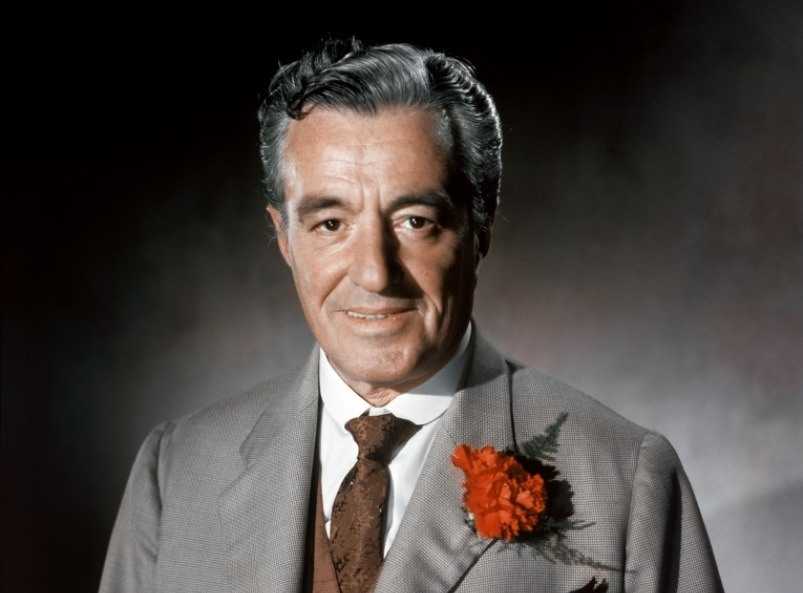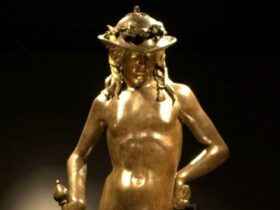Let’s retrace together the most significant moments, through a roundup of his best films, of the directorial career of Vittorio De Sica, one of the fathers of neorealism who left an indelible mark on post-war Italian cinema
On July 7, 1901, one of the fathers of Italian neorealism, Vittorio De Sica, was born. Author of unforgettable films such as Sciuscià, Bicycle Thieves and Miracle in Milan, his talent was not immediately understood at home and he has become a symbol of world cinema above all for his success abroad. His films have initially outraged by the internal political world, which wanted to give Italy a distorted image of a country now emerging from the devastation of the warbut over time they have also made inroads among the general public who often reflected themselves in the plots of the protagonists imagined by the Ciociaria director.
Vittorio De Sica was born in 1901 in Sora, in the Frusinate area (which, however, was a province of Caserta at the time), from Campanian parents belonging to the petty bourgeoisie. After a long career as an actor, which began in 1917, with The Clémenceau process directed by Alfredo De Antoni, and many years spent gravitating around the world of theatre, it was only in the 1940s that De Sica decided to devote himself to cinema as a director. His first films, in which he continues to be an interpreter, are set in boarding schools and convents: Magdalene… zero in conduct (1940) e And Garibaldian at the convent (1942). Gradually he limits his role as an actor, acquiring greater authority as a director and from there, it can be said, his career on the big screen begins.
10. Children are watching us | The best films of Vittorio De Sica
Pricò is a child who innocently observes the dissolution of his family, caused by his mother’s relationship with another man, Roberto. One day the woman runs away with Roberto, leaving her husband and son. Pricò’s father, to avoid trauma to the child, takes him to his aunt. Subsequently the child falls seriously ill and returns to his home, where he finds his mother. To recover the family serenity, father, mother and son go on vacation. Husband and wife seem to have found their stability, but then the woman is left alone on vacation with her son and Roberto manages to track her down. The two resume their relationship. The woman leaves her family again and runs away with her lover. The husband abandons his son in a religious boarding school and then commits suicide. The day his mother goes to boarding school to take care of Pricò, he refuses to follow her, preferring the solitude of boarding school.
Between late 1942 and early 1943, when fascism is in power and the world conflict is still ongoing, Vittorio De Sica creates I bambini guardo ci, based on the novel Pricò by Cesare Giulio Viola, together with screenwriter Cesare Zavattini. The film still retains some of the distinctive features of the sentimental comedy, but anticipates the style of neorealist cinema, making a very courageous work for the time. In the middle of the Fascist era, the two authors put into practice a severe criticism of the bourgeois family, showing the misdeeds of adults and the hypocrisy of parents, not always blameless.
9. Skiing | The best films of Vittorio De Sica
Pasquale (Franco Interlenghi) and Joseph (Rinaldo Smordoni) work as a shoe shiner in the center of Rome. They have one passion in common, horses. But unintentionally they are involved in a theft at the home of a fortune teller and taken to juvenile detention. The boys, locked up in different cells, are induced by the adults to give themselves away. The film ends with the escape from prison and the death of one of the protagonists. Children are still the real protagonists, a constant in his cinema up to Bicycle Thieves. The idea of making this feature film came to Vittorio De Sica when he met two little boys, who wandered around via Veneto, doing shoe shine.
Immediately after the war, Vittorio De Sica’s cinematographic activity continued with Sciuscià (1946), which is considered one of the first masterpieces of neorealism. It was the first film by Vittorio De Sica to win the Academy Award. The film, which seems to have a fairytale setting, tells real aspects of Italian society extremely tried by war events. With Sciuscià, De Sica reconfirms the path taken in The children look at us, and still shows us the world of adults through the eyes of children. Sciuscià is a film with a strong social message that sheds light on the problem of crime and juvenile detentionin relation to the theme of abandonment.
8. Bicycle Thieves | The best films of Vittorio De Sica
The film is set in Rome. The protagonist is Antonio Ricci (Lambert Majorani), unemployed, who finds work as a postman. To work, however, he must own a bicycle and his bicycle is busy at the Monte di Pietà. His wife Maria is forced to pawn some sheets to redeem the bicycle. But on the very first day of work it comes to him stolen. The poor worker goes to the police to report the theft, but he realizes that the police won’t be able to help him and decides to do it himself. With the help of a friend of his, he sets out in search of the precious bicycle.
Vittorio De Sica’s definitive consecration came in 1948 with Bicycle Thieves, which was inspired by the homonymous novel by Luigi Bartolini. The film is a portrait of post-war Italian society, when most of the population lived in extreme poverty. With this film De Sica puts into practice one of the main characteristics of his cinema, the character tracking as a sequence plan. The camera, without ever yielding to virtuous effects, becomes an ideal tool for socio-economic and dramatic research. Bicycle Thieves is considered by many to be one of the most beautiful films in the history of world cinematography and gave Vittorio De Sica the opportunity to get his according to Oscars.
7. Miracle in Milan | The best films of Vittorio De Sica
Totò is found under a cabbage by Lolotta. Years go by, Lolotta falls ill and dies. Totò is taken to an orphanage, from where he leaves after reaching the age of majority. Wandering around the city of Milan, Totò is looking for work and runs into Alfredo (Arturo Bragaglia) who, after stealing the suitcase from the naive young man, invites him to his home, a makeshift shelter made with old metal sheets. Over the months, Totò, together with many other homeless people, gives life to a real village, where those who no longer have anything are welcome. On the occasion of the festival, which inaugurates the slum, it is discovered that there is oil in the ground below.
For this film too, the director decides to show the world through the eyes of a child, albeit an adolescent, his naivety and innocence. Fearing that Neorealism would become a conventional formula, De Sica felt the need to depart in part from poetics and without abandoning it entirely, he decided to use it in a fairy-tale setting. Miracle in Milan was another international success of Vittorio De Sica and with this film he won the Grand Prix du Festival in Cannes, while in Italia fu and fiasco complete.
6. Umberto D. | The best films of Vittorio De Sica
Umberto Domenico Ferrari, an elderly man who gets by on a meager pension, is unable to pay the rent of a small furnished room. He spends the day selling off his few possessions to raise a small amount to pay off a debt with Antonia, the landlady. Umberto, without a family, manages to have a real relationship only with Maria, the house maid, and with Flaik, his inseparable dog. The film is dedicated to his father Umberto De Sica.
In 1952 the director made his crudest work, albeit dedicated to the petty bourgeoisie. The film, which was nominated for the Palme d’Or, represents the De Sica’s return to pure Neorealism. Umberto Domenico Ferrari is not a child, but is treated as such by the other characters in the film. Maria is the only one to show a minimum of affection for Umberto, but she treats him like a child who is unable to understand his amorous misadventures. The film had many problems with the world of politics: a young Giulio Andreotti, then undersecretary of culture, accused Vittorio De Sica of giving a negative image of Italian society.
5. The gold of Naples | The best films of Vittorio De Sica
Directly from 1954, it is a film divided into six episodes, among which the presence of Toto and Sophia Loren, in an exceptional cast: beyond them there are the same Victor De Sica, Edward De Filippo, Paolo Stoppa e Tina Pica.
The film is based on the homonymous collection of short stories by Giuseppe Marotta and adapted for the cinema by Cesare Zavattini. In popular stories you can see a cross-section of different social classes that then lived together in the Neapolitan city.
4. The Ciociara | The best films of Vittorio De Sica
Italy, summer 1943. Cesira is a young widow who lives in Rome with her twelve-year-old daughter during the Second World War. To escape the bombings and the pitfalls of a city in disarray, she entrusts her shop to Giovanni, an old friend of her husband’s with whom she had a brief relationship, and undertakes a long journey towards Lower Lazio to seek refuge with his daughter in Sant’Eufemia, his town of origin, near Fondi. Here he meets love but also a lot of suffering.
Also based on a novel, La Ciociara confirmed the partnership between De Sica and Sophia Loren, whose role should initially have been entrusted to Anna Magnani. A well-known and highly successful film, it partly represents a homage by the director to his origins.
3. Yesterday, Today, Tomorrow | The best films of Vittorio De Sica
The film is divided into three episodes set in three major Italian cities (Naples, Milan and Rome) all interpreted by the couple formed by Sophia Loren and Marcello Mastroianni and directed by the director Vittorio De Sica on subjects written by as many great authors of Italian culture. An ambitious project that has met with enormous success and has entered the collective imagination for various reasons.
The episode set in Rome is for example rendered famous from the cult scene of Mara’s striptease (once again, Sophia Loren), accompanied by the notes of Abat-jour (Salomé), a success by Henry Wright, under the eyes of a ravenous Mastroianni, in the role of a Bolognese customer. But even in the others there is no shortage of memorable moments sometimes inspired by stories that really happened.
2. Italian Wedding | The best films of Vittorio De Sica
Domenico Soriano, rich pastry chef and unrepentant…
















Leave a Reply
View Comments